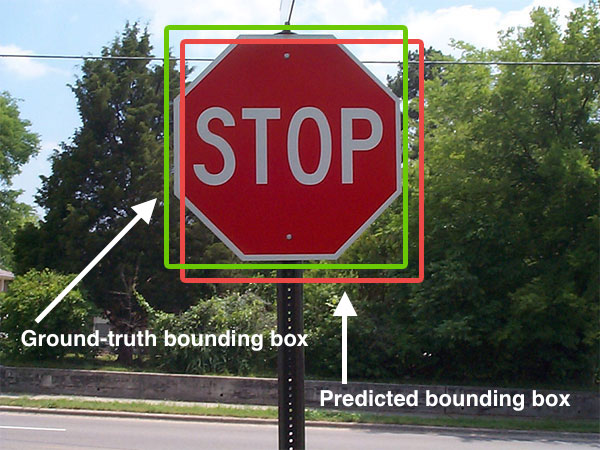|
Binocular Disparity
Binocular disparity refers to the difference in image location of similar features seen by the left and right eyes resulting from the eyes' horizontal separation (parallax). In visual perception, binocular disparity refers to edges and small blobs with Double-nail_illusion#equal_contrast_sign, equal contrast sign in the retinal images. The mind extracts binocular disparity for these edges and blobs and then Double-nail_illusion#fills_in_surfaces, fills in the depth and forms of surfaces, resulting in Binocular_vision#Stereopsis, stereopsis. Related terms There exists also vertical disparities which result from height level differences and which can also invoke a depth sensation.Matthews N;Meng X.; Xu P; Qian Q.(2003) “A physiological theory of depth perception from vertical disparity”, Vision Research. Volume 43, Issue 1, January 2003, Pages 85-99. In stereoscopy and computer vision, binocular disparity refers to the difference in coordinates of similar features within t ... [...More Info...] [...Related Items...] OR: [Wikipedia] [Google] [Baidu] |
Binocular Vision
Binocular vision is seeing with two eyes. The Field_of_view, field of view that can be surveyed with two eyes is greater than with one eye. To the extent that the visual fields of the two eyes overlap, #Depth, binocular depth can be perceived. This allows objects to be recognized more quickly, camouflage to be detected, spatial relationships to be perceived more quickly and accurately (#Stereopsis, stereopsis) and perception to be less susceptible to optical illusions, optical illusions. In secion #Medical, Medical attention is paid to the occurrence, defects and sharpness of binocular vision. In section #Biological, Biological the occurrence of binocular vision in animals is described. Geometric terms When the left eye (LE) and the right eye (RE) observe two objects X and Y, the following concepts are important:Krol J.D.(1982),"Perceptual ghosts in stereopsis, a ghosly problem in binocular vision", PhD thesis ISBN 90-9000382-7.Koenderink J.J.;van Doorn A.J. (1976) "Geometry of ... [...More Info...] [...Related Items...] OR: [Wikipedia] [Google] [Baidu] |
Binocular Disparity
Binocular disparity refers to the difference in image location of similar features seen by the left and right eyes resulting from the eyes' horizontal separation (parallax). In visual perception, binocular disparity refers to edges and small blobs with Double-nail_illusion#equal_contrast_sign, equal contrast sign in the retinal images. The mind extracts binocular disparity for these edges and blobs and then Double-nail_illusion#fills_in_surfaces, fills in the depth and forms of surfaces, resulting in Binocular_vision#Stereopsis, stereopsis. Related terms There exists also vertical disparities which result from height level differences and which can also invoke a depth sensation.Matthews N;Meng X.; Xu P; Qian Q.(2003) “A physiological theory of depth perception from vertical disparity”, Vision Research. Volume 43, Issue 1, January 2003, Pages 85-99. In stereoscopy and computer vision, binocular disparity refers to the difference in coordinates of similar features within t ... [...More Info...] [...Related Items...] OR: [Wikipedia] [Google] [Baidu] |
Parallax
Parallax is a displacement or difference in the apparent position of an object viewed along two different sightline, lines of sight and is measured by the angle or half-angle of inclination between those two lines. Due to perspective (graphical), foreshortening, nearby objects show a larger parallax than farther objects, so parallax can be used to determine distances. To measure large distances, such as the distance of a planet or a star from Earth, astronomers use the principle of parallax. Here, the term ''Stellar parallax, parallax'' is the semi-angle of inclination between two sight-lines to the star, as observed when Earth is on opposite sides of the Sun in its orbit. These distances form the lowest rung of what is called "the cosmic distance ladder", the first in a succession of methods by which astronomers determine the distances to celestial objects, serving as a basis for other distance measurements in astronomy forming the higher rungs of the ladder. Because parallax ... [...More Info...] [...Related Items...] OR: [Wikipedia] [Google] [Baidu] |
Brute-force Search
In computer science, brute-force search or exhaustive search, also known as generate and test, is a very general problem-solving technique and algorithmic paradigm that consists of Iteration#Computing, systematically checking all possible candidates for whether or not each candidate satisfies the problem's statement. A brute-force algorithm that finds the divisors of a natural number ''n'' would enumerate all integers from 1 to n, and check whether each of them divides ''n'' without remainder. A brute-force approach for the eight queens puzzle would examine all possible arrangements of 8 pieces on the 64-square chessboard and for each arrangement, check whether each (queen) piece can attack any other. While a brute-force search is simple to implement and will always find a solution if it exists, implementation costs are proportional to the number of candidate solutionswhich in many practical problems tends to grow very quickly as the size of the problem increases (#Combinatorial ... [...More Info...] [...Related Items...] OR: [Wikipedia] [Google] [Baidu] |
Computer Vision
Computer vision tasks include methods for image sensor, acquiring, Image processing, processing, Image analysis, analyzing, and understanding digital images, and extraction of high-dimensional data from the real world in order to produce numerical or symbolic information, e.g. in the form of decisions. "Understanding" in this context signifies the transformation of visual images (the input to the retina) into descriptions of the world that make sense to thought processes and can elicit appropriate action. This image understanding can be seen as the disentangling of symbolic information from image data using models constructed with the aid of geometry, physics, statistics, and learning theory. The scientific discipline of computer vision is concerned with the theory behind artificial systems that extract information from images. Image data can take many forms, such as video sequences, views from multiple cameras, multi-dimensional data from a 3D scanning, 3D scanner, 3D point clouds ... [...More Info...] [...Related Items...] OR: [Wikipedia] [Google] [Baidu] |
Vision
Vision, Visions, or The Vision may refer to: Perception Optical perception * Visual perception, the sense of sight * Visual system, the physical mechanism of eyesight * Computer vision, a field dealing with how computers can be made to gain understanding from digital images or videos * Machine vision, technology for imaging-based automatic inspection Perception of the future * Foresight (psychology), in business, the ability to envisage future market trends and plan accordingly * Goal, a desired result ** Vision statement, a declaration of objectives to guide decision-making Other perceptions * Vision (spirituality), a supernatural experience that conveys a revelation * Hallucination, a perception of something that does not exist Arts and media Events * Vision Festival, a New York City art festival * Visions (convention), a science fiction event Film and television Film * Vision (2009 film), ''Vision'' (2009 film), German film * Vision (2018 film), ''Vision'' (2018 film), Jap ... [...More Info...] [...Related Items...] OR: [Wikipedia] [Google] [Baidu] |
Perception
Perception () is the organization, identification, and interpretation of sensory information in order to represent and understand the presented information or environment. All perception involves signals that go through the nervous system, which in turn result from physical or chemical stimulation of the sensory system.Goldstein (2009) pp. 5–7 Vision involves light striking the retina of the eye; smell is mediated by odor molecules; and hearing involves pressure waves. Perception is not only the passive receipt of these signals, but it is also shaped by the recipient's learning, memory, expectation, and attention. Gregory, Richard. "Perception" in Gregory, Zangwill (1987) pp. 598–601. Sensory input is a process that transforms this low-level information to higher-level information (e.g., extracts shapes for object recognition). The following process connects a person's concepts and expectations (or knowledge) with restorative and selective mechanisms, ... [...More Info...] [...Related Items...] OR: [Wikipedia] [Google] [Baidu] |
Psychology
Psychology is the scientific study of mind and behavior. Its subject matter includes the behavior of humans and nonhumans, both consciousness, conscious and Unconscious mind, unconscious phenomena, and mental processes such as thoughts, feelings, and motivation, motives. Psychology is an academic discipline of immense scope, crossing the boundaries between the Natural science, natural and social sciences. Biological psychologists seek an understanding of the Emergence, emergent properties of brains, linking the discipline to neuroscience. As social scientists, psychologists aim to understand the behavior of individuals and groups.Hockenbury & Hockenbury. Psychology. Worth Publishers, 2010. A professional practitioner or researcher involved in the discipline is called a psychologist. Some psychologists can also be classified as Behavioural sciences, behavioral or Cognitive science, cognitive scientists. Some psychologists attempt to understand the role of mental functions in i ... [...More Info...] [...Related Items...] OR: [Wikipedia] [Google] [Baidu] |
Epipolar Geometry
Epipolar geometry is the geometry of stereo vision#Computer stereo vision, stereo vision. When two cameras view a 3D scene from two distinct positions, there are a number of geometric relations between the 3D points and their projections onto the 2D images that lead to constraints between the image points. These relations are derived based on the assumption that the cameras can be approximated by the pinhole camera model. Definitions The #Epipolar constraint and triangulation, figure below depicts two pinhole cameras looking at point X. In real cameras, the image plane is actually behind the focal center, and produces an image that is symmetric about the focal center of the lens. Here, however, the problem is simplified by placing a ''virtual image plane'' in front of the focal center i.e. optical center of each camera lens to produce an image not transformed by the symmetry. OL and OR represent the centers of symmetry of the two cameras lenses. X represents the point of inter ... [...More Info...] [...Related Items...] OR: [Wikipedia] [Google] [Baidu] |
Cyclodisparity
In vision science, cyclodisparity is the difference in the rotation angle of an object or scene viewed by the left and right eyes. Cyclodisparity can result from the eyes' torsional rotation (''cyclorotation'') or can be created artificially by presenting to the eyes two images that need to be rotated relative to each other for binocular fusion to take place. Human and animal vision The eyes and visual system can compensate for cyclodisparity up to a certain point; if the cyclodisparity is larger than a threshold, the images cannot be fused, resulting stereoblindness, and in double vision in subjects who otherwise have full stereo vision. When a human subject is presented with images that have artificial cyclodisparity, cyclovergence is evoked, that is, a motor response of the eye muscles that rotates the two eyes in opposite directions, thereby reducing cyclodisparity. Visually-induced cyclovergence of up to 8 degrees has been observed in normal subjects. Furthermore, up to ... [...More Info...] [...Related Items...] OR: [Wikipedia] [Google] [Baidu] |
Mars Exploration Rover
NASA's Mars Exploration Rover (MER) mission was a robotic space mission involving two Mars rovers, ''Spirit (rover), Spirit'' and ''Opportunity (rover), Opportunity'', exploring the planet Mars. It began in 2003 with the launch of the two rover (space exploration), rovers to explore the Martian surface and Geology of Mars, geology; both landed on Mars at separate locations in January 2004. Both rovers far outlived their planned missions of 90 Timekeeping on Mars#Sols, Martian solar days: MER-A ''Spirit'' was active until March 22, 2010, while MER-B ''Opportunity'' was active until June 10, 2018. Objectives The mission's scientific objective was to search for and characterize a wide range of rock (geology), rocks and soils that hold clues to past Water on Mars, water activity on Mars. The mission is part of NASA's Mars Exploration Program, which includes three previous successful landers: the two Viking program landers in 1976 and Mars Pathfinder probe in 1997. The scientific ... [...More Info...] [...Related Items...] OR: [Wikipedia] [Google] [Baidu] |



